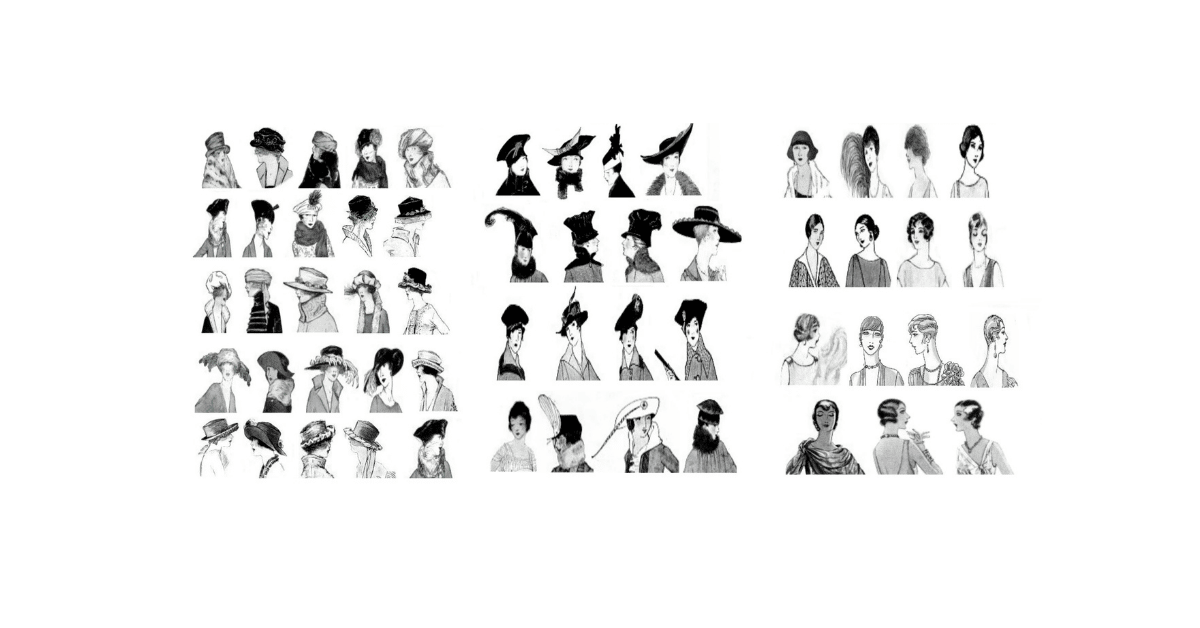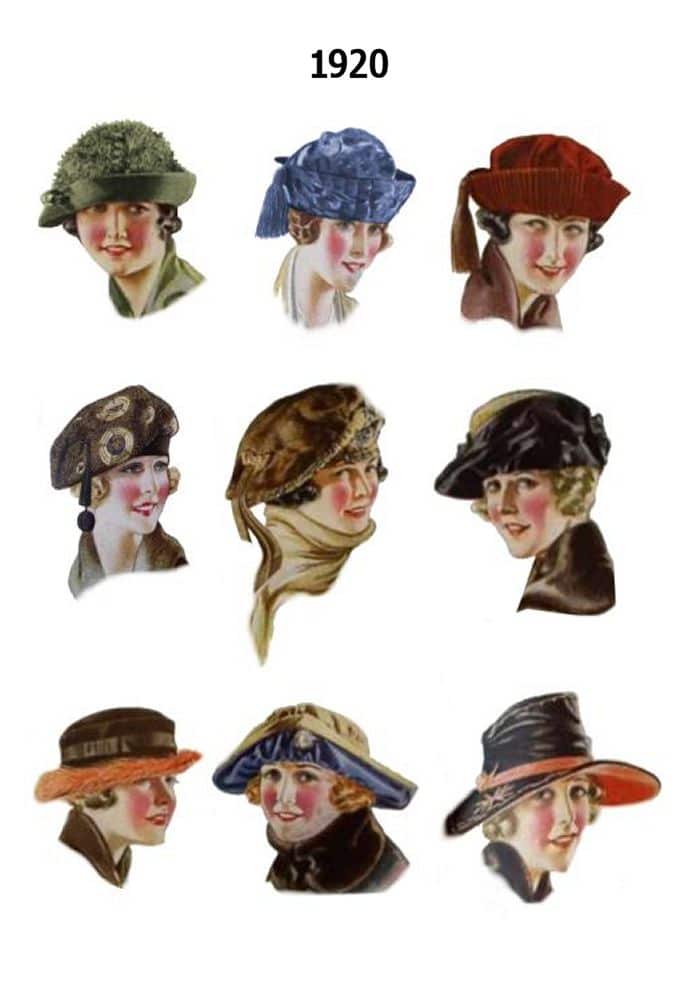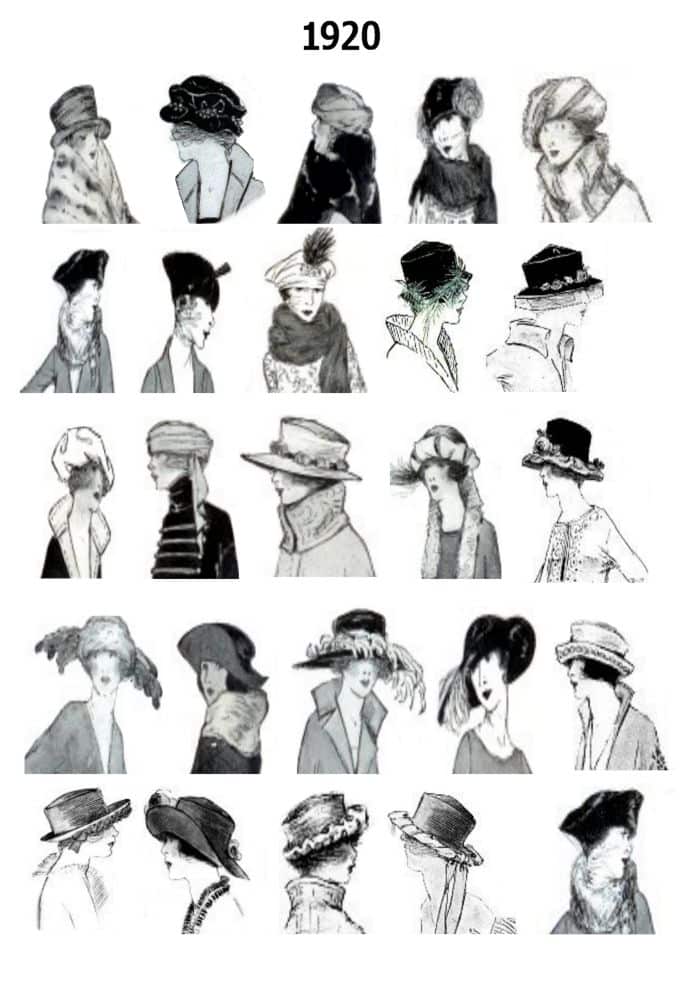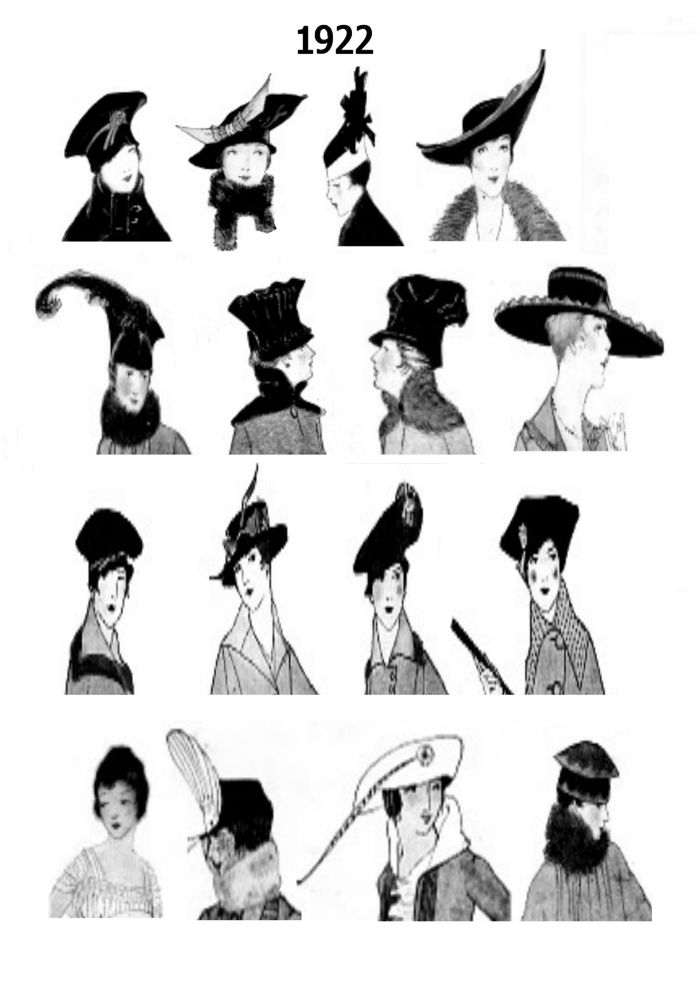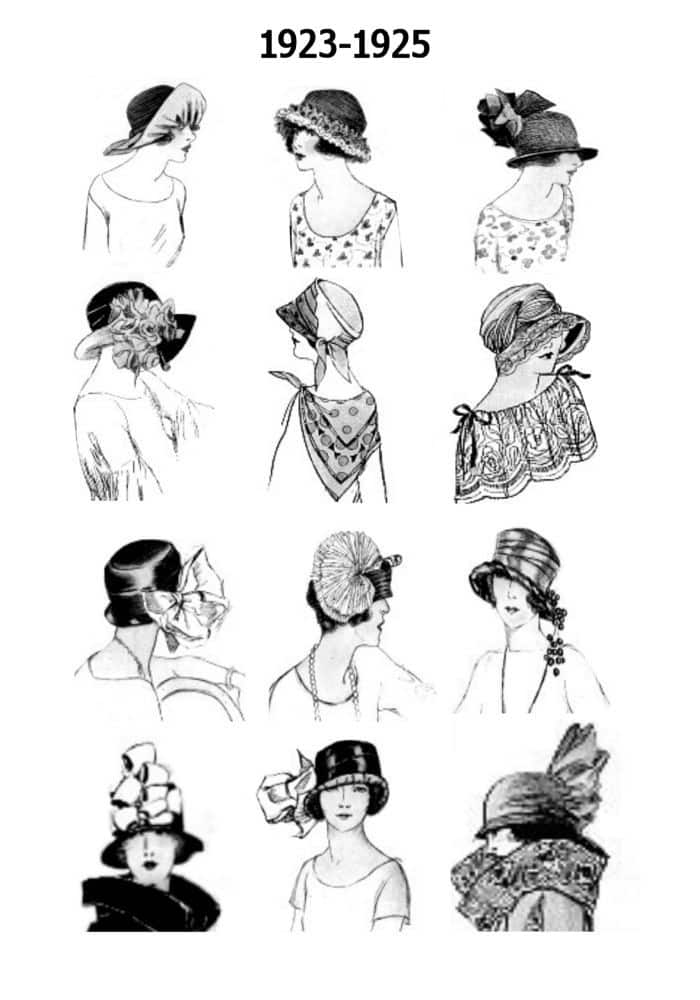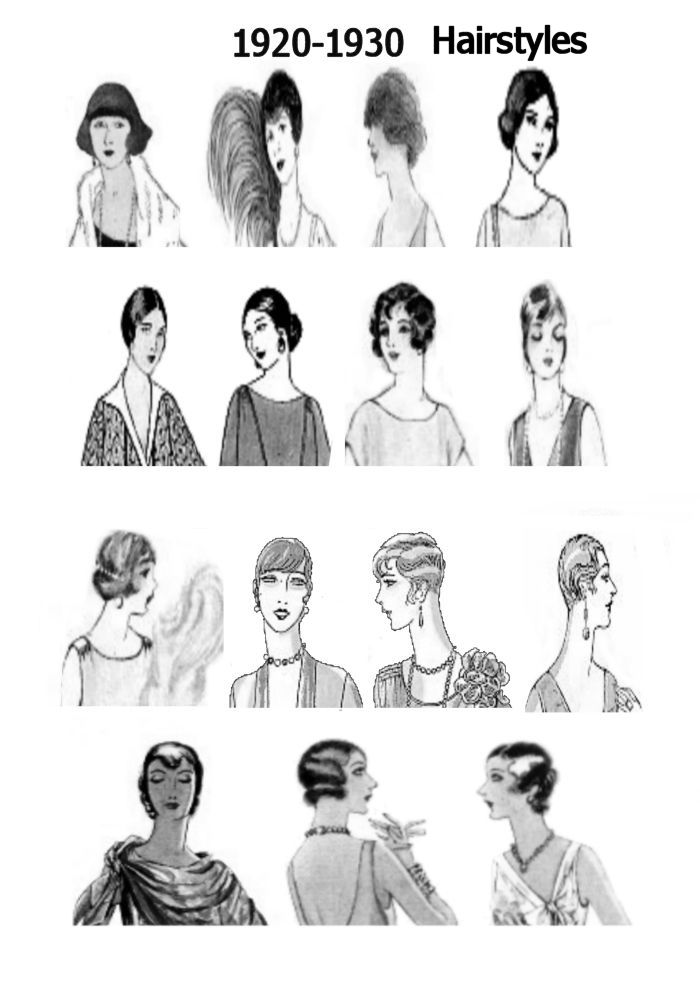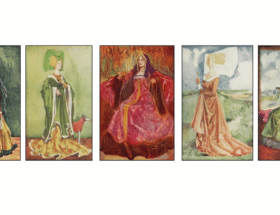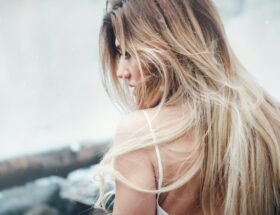The hats of the 1920s have detailed text on Cloche Hats. Hairstyles remained simple in shape and were often adorned at night with bandeaus, barrettes, aigrettes and other hair ornamentation including turbans and exotic feathers.
As the hat became snugger and closer fitting so the hairstyle became more cropped and masculine.
Selection of 1920s pictures of hat and hairstyles.
Short Hair in the 1920s
In the 1920s there was trend for short hair. Hair style was first bobbed, then shingled, finally, Eton cropped in 1926-7.
An Eton crop was considered daring and shocked some of the older generation, since hair had always been thought a woman's crowning glory. In 1920s hair styles, only maiden aunts and elderly dowagers avoided the severe shorter styles.
Hat Inspiration in the 1920s
The 1920s was a period when milliners used their imagination to embrace aspects of dress from nations far and wide.
Inspiration was sought from Egypt, China, Japan and Russia. Headdresses including turbans, toques, kokoshniks and tiaras were all reinvented by designers.
Both the couture houses of Molyneux and Lanvin had atelier shops attached to them so buyers were able to make a hat selection at the same time as buying a dress or suit and gain a complete ensemble that matched to perfection.
Patou also felt accessories were an important feature of fashion and he too established a millinery section and his final finishing touch accessory was his perfume selection, the most famous of which is Joy. Caroline Reboux was a designer of hats in Paris who gained international acclaim at that time.
The Iconic Cloche Hats of the 1920s
The cloche hat was not confined to the 1920s as is often first thought.
It was fashionable from 1908 to 1933 was one of the most extreme forms of millinery ever, with an appearance that resembled a helmet.
It was the iconic hat of the twenties decade and will ever be associated with the flappers of the era. It was responsible for the period stance we associate with the era.
To wear one correctly the hat had to be all but pulled over the eyes, making the wearer have to lift up the head, whilst peering snootily down the nose.
Cloche hats had a basic bell contour with bulbous crowns which if correctly designed could add inches to the height of the wearer helping to foster the haughty look, so redolent of the cloche in our mind’s eye.
Art Deco influence can be seen in the zigzag seaming and construction lines of many cloche hats. Art Deco appliqué was a popular embellishment. Cloches existed in many forms including one with a beret like top.
Cloche Hat Timeline
Art deco design elements often decorated cloches throughout the twenties.
|
| 1908 Hats |
As early as 1908 close fitting hats with deep crowns that clung over the brow had emerged and as the war years progressed. At both the start and end of World War 1 the close head fit became even snugger. |
| 1916 |
From 1916 the cloche was firmly established as a style women wore a great deal. |
| Early 20s |
By the twenties the hair worn under it was also cropped so short that the new even closer fitting cloche shape made a statement that said 'new woman.' |
| 1922-25 |
Cloches are worn with small brims at the front. |
| 1926 |
After 1926 the only way to update the cloche fashion was reduce the brim substantially. |
| 1928 |
By 1928 the cloche hat brim disappeared entirely, so between 1926 and 1929 asymmetric brims reduced often to nothing. |
1920 Hairstyles
By 1923 the bob, a pageboy style with some length was seen everywhere amid enlightened women. About 1924 the razor cut shingle style was introduced and the most clear cut silhouette of the year is the dome shaped rounded crown with a much reduced brim.
From the mid twenties styled, shaped to the head cuts, which combined various forms of waving from the Marcel wave to finger waving, became a norm. All of these new cuts enabled smaller closer fitting headwear like the cloche to be worn as the shaped hair conformed to the skull’s contour.
Eton Crop - The most extreme form of hairstyle was the Eton Crop circa 1927 to 1928 and the hair could have Brylcreem brilliantine to increase the skull like appearance of the hair style.
Shiny black hair was the best form of this fashion. Josephine Baker wore this style of slick, greased hair to great effect.
By 1927 hair was softening from straight to wavy and by 1928 neckline nape hair began to be grown and thus softening the look of some women.
Likewise the way the brim was worn gave a new meaning to the cloche style. The forehead and hairline was exposed as either they were cut higher, or the front brim was lifted back on one side following the asymmetric lines of skirts which dipped and waved dithering from month to month as the hemline wavered with indecisiveness.
By the late twenties women suddenly wanted to break free of the cloche and show their hair to the world.
The point that they could have shorn hair had been made, now the new point to make was that they were free to choose to be ultra feminine whilst having more rights formerly once an attribution of the male gender only.
Construction Elements in Cloches
The cloche became a statement of understated chic. The elements used in its construction became subtly complex as zig zag jigsaw shaped pieces of fabric were used to echo the complexity of dress lines of jigsaw zig zags on bias cut pieced garments much favoured by the rich.
The rich noticed these discreet clever differences, but mass produced versions ingeniously took short cuts, adapting machinery so that it moulded and shaped ridges that looked like pieced effects. Use of moulding techniques with artfully produced ridges in cloches achieved an almost identical appearance at first glance.
Materials for Cloches
Mass produced cloches were an easy market to produce as only the barest amount of shaping and blocking was necessary for such a simply formed hat. Felt was the most commonly used material as it adapted well to the form fitting shape, but cloches for mid twenties and later summers were also made from sisal, balibuntal and Baku straws.
Sisal was a fine straw that produced cloches with a linen look weave and found its way to the west in 1926. Baku (Thailand) straws were also varnished to make the cloche shiny and helmet like. Straws could also be painted or embroidered in raffia or ribbon work.
Painting of hats was a common way of revamping a hat and Agatha Christie describes in her autobiography how she painted hats to revive them and added new trims to enliven their look.
Trimmings on Cloches
To retain the helmet like appearance of the cloche, trimmings were generally kept to a minimum with surface appliqués and other decorative pieces usually applied to one side only. Feather fans at the side and scarves swathing the hat and falling to one side were a usual trim.
That side was of generally the right side of the cloche, but not exclusively so.
Severely rich and chic women favoured the understated effect of single diamond clips. They wore expensive platinum and diamond brooches to adorn the most pared down of cloches after 1926. Brooch styles were often stylish and modern in the art deco style and sometimes badge like.
Brimmed Felts and Capelines
In the late twenties brimmed felts were worn casually with casual clothes for sporting events and narrower cloches partnered occasion wear.
Capelines in straw were romantic looking broader brimmed hats and they and were also considered casual soft wear were often worn at the beach with summer frocks.
But hat variations were being added to the wardrobe as berets as favoured by Marlene Dietrich and Schiaparelli's knitted sock style hats were modern takes on the hat that was nothing like earlier hats of the Edwardian and Victorian eras. Innovations in hats emphasized tidiness, neatness, or quirkiness and became emerging advances in fashion trends.
This harsh style was made more acceptable by the use of make up. Make up became the epitome of sophisticated chic and self-assurance. When a woman publicly applied make up from a glamorous compact when in a restaurant or dance hall, she was exhibiting the new symbol of womanly grace and refinement.
Never before had women abandoned the softness that came with possession of feminine tresses and its effect on physical appearance. Now the effect was for a different effect, one that said look at me I am a new woman unhampered by old ideas and I embrace the new.
Make up instead was used to define the face in the modern style making it a specific and recognizable new look of the new women.
Blush was not considered quite proper so was used very sparingly. Those that overdid the rouge, were frowned upon for their poor skill at application, but luscious ox-blood red enhanced lips were a must for the woman of the moment.
